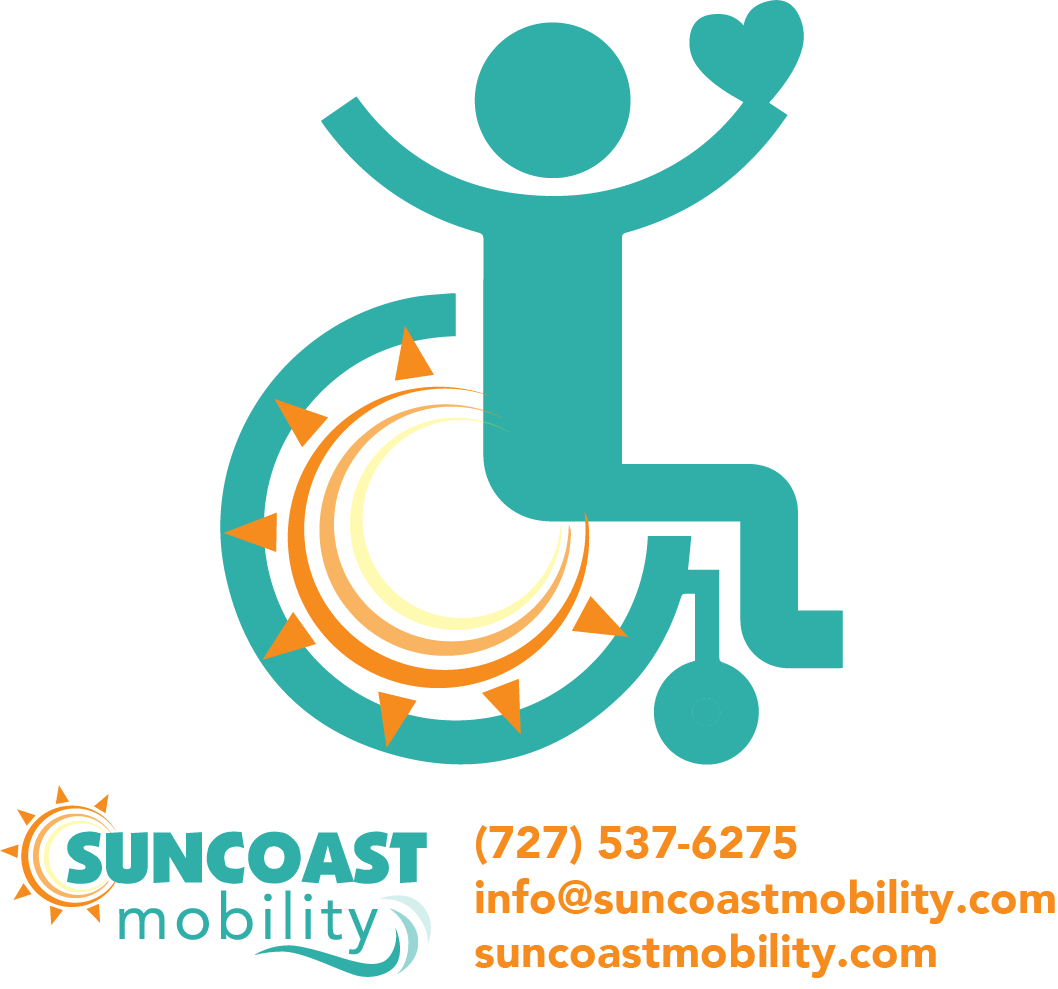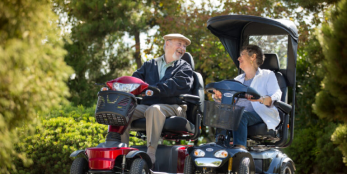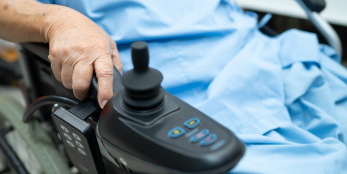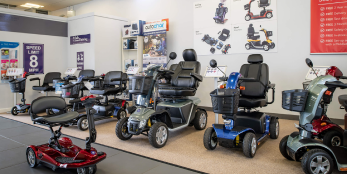Table of contents
Southwest Airlines Mobility Scooter Policy: Everything You Need to Know Before You Fly
Traveling by air can feel overwhelming when you rely on a mobility scooter, but airlines are required by law to make the process accessible. If you’re planning to fly with Southwest Airlines, knowing their mobility scooter policy in advance is essential. Understanding how scooters are handled, what battery rules apply, and how to prepare your device can save you time, stress, and unexpected challenges at the airport.
This complete guide covers everything you need to know about the Southwest Airlines mobility scooter policy—from booking your flight and preparing your scooter to gate-check procedures, battery regulations, and tips for protecting your mobility aid.

Why It’s Important to Know the Policy
Mobility scooters are classified as assistive devices under the Air Carrier Access Act (ACAA). This law requires all U.S. airlines, including Southwest, to accommodate passengers who rely on mobility aids. However, each airline has specific rules based on aircraft design, cargo space, and safety regulations.
Here’s why knowing Southwest’s scooter policy matters:
✅ Cargo door limitations mean your scooter must fit specific dimensions.
✅ Battery rules vary depending on type and size, especially for lithium-ion models.
✅ Advance preparation ensures your scooter is handled properly and avoids delays.
✅ Documentation protects your rights if your scooter is lost or damaged.
By preparing in advance, you can enjoy the freedom of travel without worrying about your independence being compromised.
Booking Your Flight with a Mobility Scooter
Southwest Airlines does not require you to give advance notice if you plan to travel with a mobility scooter, but it is highly recommended. Informing them ahead of time helps ensure ground staff and crew are prepared to handle your scooter safely.
You can request assistance in several ways:
When booking online, check the “Special Assistance” option in the Passenger & Payment Info section.
After booking, go to Manage Reservations → Special Assistance to add scooter details.
Call Southwest’s dedicated accessibility line at 1-800-I-FLY-SWA (1-800-435-9792).
If you’re traveling with a large group of passengers requiring mobility assistance, Southwest recommends notifying them at least 24 hours before departure. This helps ensure there is adequate staffing and enough cargo space to accommodate multiple scooters or wheelchairs.
Arriving at the Airport
When flying with a mobility scooter, timing is everything. Southwest recommends:
Arriving at least two hours before departure, and ideally even earlier for busy airports.
Letting staff know as soon as you arrive that you’re traveling with a scooter.
Being prepared to surrender your scooter up to one hour before departure so that it can be properly tagged, inspected, and stored. During this time, you’ll be transferred to an airport wheelchair.
You’ll also need to complete a Wheelchair/Mobility Aid Information Form, which includes:
The type of device (mobility scooter, power wheelchair, manual wheelchair).
Battery type (gel, dry-cell, lithium-ion, etc.).
Folding or disassembly instructions.
Special handling notes.
Pro tip: Print and complete this form at home, then tape a copy directly to your scooter. This makes the boarding process faster and ensures airline staff have the correct handling instructions.
Gate-Checking Your Mobility Scooter
One of the biggest benefits of flying Southwest with a mobility scooter is that you can ride your scooter all the way to the gate. Here’s how the process works:
-
Ride through security and the terminal – With TSA assistance if needed, you can remain on your scooter until you reach the boarding area.
-
Tagging and inspection – A Southwest gate agent will place a mobility device tag on your scooter, ensuring it is handled with priority and returned quickly after the flight.
-
Transfer to a wheelchair – Before boarding, staff will assist you into an airport wheelchair and provide pre-boarding access.
-
Scooter handling – Trained ground staff will move your scooter to the cargo hold, usually loading it last and unloading it first to minimize risk.
Upon arrival, your scooter will typically be returned to you at the jet bridge or at the gate, so you can transfer directly back onto it. In rare cases, such as certain international airports, scooters may be returned at baggage claim.
Battery Rules and Restrictions
Battery safety is one of the most important parts of the Southwest Airlines mobility scooter policy. Since mobility scooters use different types of batteries, knowing the rules will help you prepare correctly.
Power Disconnection Requirement
Southwest requires that your scooter have a physical means of disconnecting power. This prevents accidental activation during transport. Acceptable methods include:
Removing the ignition key.
Locking the on/off switch in the “off” position.
Disconnecting the joystick.
Removing the battery and insulating the terminals.
Lithium-Ion Battery Rules
Lithium-ion batteries have stricter requirements due to fire safety risks.
If the battery is installed and securely enclosed, there is no size limit.
-
If the battery is removable, you must carry it in your carry-on luggage, subject to watt-hour limits:
300 Wh maximum for a single removable battery.
160 Wh maximum per battery if using two smaller ones.
You may also carry one spare battery up to 300 Wh or two spares up to 160 Wh each.
All batteries must have clear, legible labeling in English. If labels are missing, damaged, or not in English, Southwest may refuse transport.
Non-Lithium Batteries
Southwest also allows gel, sealed lead-acid, and dry-cell batteries commonly used in mobility scooters. These are less restrictive but must still be properly disconnected and secured.
What Southwest Does Not Accept
Southwest does not allow the following devices as mobility aids:
-
Hoverboards or self-balancing scooters.
-
E-bikes or recreational scooters.
-
Riding suitcases and skateboards.
-
Batteries without power disconnection methods.
-
Devices with damaged or illegible battery labels.
Only disability-related mobility devices qualify for accommodations under Southwest’s accessibility program.
Protecting Your Mobility Scooter During Travel
Even though Southwest Airlines takes special care when handling mobility devices, damage can sometimes occur during transport. Ensuring your mobility scooter is properly prepared before your flight is one of the most important steps you can take to protect your investment and guarantee a smoother travel experience. Following a few simple precautions can minimize the risk of scratches, broken parts, or battery issues.
Before Your Flight
Proper preparation begins at home. Start by taking detailed photos of your mobility scooter from multiple angles, including close-ups of delicate areas such as the joystick, control panel, armrests, and battery compartment. These photos serve as documentation in case any damage occurs during transit.
If your mobility scooter can be disassembled or folded, take advantage of this feature to make it easier to transport. Compact pieces are easier for airline staff to handle and reduce the chance of mishaps in the cargo hold. Be sure to label each part clearly with your name and contact information, ensuring nothing gets misplaced during handling.
Protect sensitive components by wrapping fragile areas with bubble wrap or soft padding. Attaching written handling instructions to your mobility scooter or including them on Southwest Airlines’ Wheelchair/Mobility Aid Information Form can guide ground staff in folding, disassembling, or reconnecting the device correctly.
After Your Flight
Once your mobility scooter is returned at the gate or jet bridge, inspect it immediately. Check for scratches, loose parts, or other damage before leaving the airport. If you notice any issues, report them right away to a Southwest Airlines representative. Prompt reporting increases the chances of a quick resolution.
Depending on the situation, Southwest Airlines may offer a loaner mobility device, repair services, or even a replacement for serious damage. Having travel insurance that covers mobility equipment is also highly recommended for additional peace of mind.
Pro Travel Tips
Consider keeping a small “ mobility travel kit ” in your carry-on bag. This kit can include duct tape, zip ties, and protective covers, which can be used for quick fixes if minor issues arise during travel. Being prepared not only helps protect your mobility scooter but also ensures a more stress-free journey, allowing you to focus on your trip rather than worrying about potential damage.
By taking these steps, you can help ensure that your mobility scooter arrives safely at your destination, allowing you to travel confidently and comfortably with Southwest Airlines.
Quick Checklist for Traveling with a Scooter on Southwest
Here’s a simple step-by-step checklist to make your trip smoother:
Step
Action
| Booking | Notify Southwest of scooter details during or after booking. |
| Forms | Print and complete the Mobility Aid Form in advance. |
| Arrival | Arrive at least 2 hours early; allow up to 1 hour for scooter prep. |
| Battery | Ensure disconnection method is clear; carry removable batteries if required. |
| Gate-Check | Ride to the gate; confirm where scooter will be returned. |
| Arrival | Inspect scooter and report damage immediately. |
What is the Southwest Airlines mobility scooter policy?
Southwest Airlines permits passengers to travel with battery-powered mobility scooters, provided the device has a physical means of disconnecting power. This could be as simple as removing a key or ensuring that the joystick can be secured in the “off” position. This precaution helps prevent accidental activation during transport. To ensure a smooth experience, passengers should notify Southwest that they are traveling with a mobility aid, and a Customer Service Agent will inspect the scooter at the gate before applying a gate-check tag. Once you reach your destination, your scooter will typically be returned to you at the jet bridge.
Before your flight, it’s important to confirm that your scooter meets Southwest’s requirements. Make sure it has a reliable power disconnection method and, if it uses a lithium battery, remove it and bring it into the cabin with you. While advance notice is not mandatory, it is helpful to provide Southwest with details about your scooter ahead of time. Printing and completing the Southwest Airlines Wheelchair/Mobility Aid Information Form—with specifications and a photo of your device—can make check-in and inspection much easier.
At the airport, you’ll need to notify a gate agent or stop at the customer service desk to receive a gate-check tag. The agent will inspect your scooter and its battery to confirm that it complies with airline safety standards. Once tagged, you may continue using your scooter until it’s time to board. At that point, you’ll park it at the gate, and Southwest staff will stow it in the aircraft’s cargo hold for transport. Passengers with mobility devices are also eligible for preboarding, allowing extra time and assistance when getting settled.
After landing, your scooter will be returned to you at the jet bridge, so you won’t need to wait at baggage claim. Take a moment to inspect it before leaving the airport, and if you notice any damage, report it right away to a Southwest representative. If repairs or replacements are necessary, Southwest can arrange a loaner device at the airport to ensure you stay mobile. These steps help ensure that your mobility scooter is transported safely while keeping your travel experience as stress-free as possible.
Can I take a mobility scooter on Southwest Airlines?
Southwest Airlines accepts battery-powered mobility aids, including mobility scooters, for passengers with disabilities. For safe transport, each device must have a way to disconnect power to prevent accidental activation.
What size mobility scooter can I take on a plane?
You are permitted to travel with a mobility scooter powered by a 24V 11.5Ah battery. This includes various types, such as folding mobility scooters, which can be collapsed or disassembled into compact pieces for easy storage. Many of these models also feature a lower seat height, providing added comfort during travel.
How much is it to take a mobility scooter on a plane?
In most cases, bringing a mobility scooter on a plane does not incur additional fees, as airlines are required to accept them as assistive devices. However, you may face costs for battery replacement or special packaging if needed. It’s also a good idea to have travel insurance to protect against any potential damage during transit.
Are mobility scooters TSA approved?
Wheelchairs and other mobility devices are allowed through security checkpoints but are not permitted to be brought into the aircraft cabin.
Final Thoughts on Flying with a Mobility Scooter on Southwest Airlines
Southwest Airlines has developed a comprehensive mobility scooter policy designed to ensure both safety and accessibility for passengers who rely on mobility devices. By understanding the rules and preparing your scooter in advance, you can minimize stress, prevent damage, and maintain your independence throughout your journey. The airline’s procedures for gate-checking, battery handling, and device return are clear and standardized, making it easier for passengers to travel confidently.
While Southwest takes extra care in handling mobility scooters and other assistive devices, passengers still play an important role in preparation. This includes properly disconnecting batteries, labeling all parts, folding or disassembling the scooter if possible, and providing detailed handling instructions. Documenting your scooter with photos and completing the Wheelchair/Mobility Aid Information Form in advance can also save time at the airport and ensure ground staff are equipped to handle your device safely.
Travelers should also be aware of battery regulations. Lithium-ion, gel, and dry-cell batteries each have specific requirements, and following these guidelines helps prevent delays or refusals at the gate. By carrying removable batteries in your cabin bag, labeling them correctly, and ensuring all batteries are protected, you can comply with airline rules while keeping your scooter safe during transit.
Southwest Airlines also provides helpful accessibility features, including the ability to ride your scooter to the gate, pre-boarding for passengers who need assistance, and prompt return of devices at the jet bridge. In the rare event of damage or delay, Southwest can provide loaner devices, repair services, or replacements, which adds another layer of reassurance for passengers traveling with mobility aids.
In short, flying with a mobility scooter on Southwest Airlines can be a smooth, stress-free experience when you plan ahead and follow the airline’s policies. Arriving early, documenting your scooter’s condition, understanding battery rules, and communicating your needs with staff are key steps for a successful trip. With careful preparation, you can focus on your journey and enjoy the freedom of travel while maintaining full independence from start to finish.
Pro Tip: Keeping a small mobility travel kit—including duct tape, zip ties, and protective covers—can help address minor issues quickly and keep your travel experience uninterrupted.
By combining Southwest’s support with your own preparation, you can fly confidently, knowing your mobility scooter will be handled safely and returned promptly, letting you enjoy every part of your trip with peace of mind.









